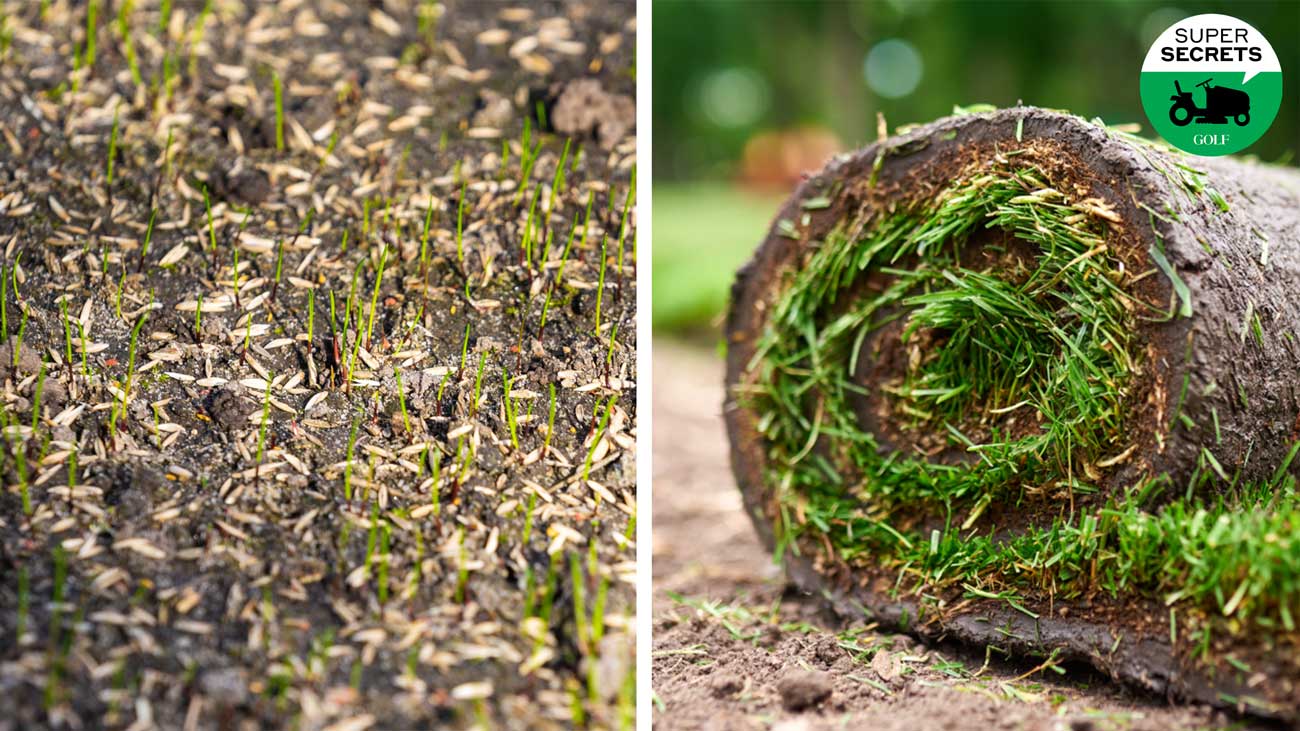Narin An made four straight birdies around the turn and finished with an 8-under 64 Thursday for a one-shot lead in the CME Group Tour Championship.
8 yard-watering secrets for lusher, greener grass | Super Secrets


When to water, where to water, how to water. It’s all important.
Getty Images
Welcome to Super Secrets, a GOLF.com series in which we pick the brains of the game’s leading superintendents. By illuminating how course maintenance crews ply their trades, we’re hopeful we can not only give you a deeper appreciation for the important, innovative work they do but also provide you with maintenance tips that you can apply to your own little patch of paradise. Happy gardening!
Without water, there would be no life. Even worse, there would be no golf. No wonder the industry works so hard to save it. Kevin Breen is president of the Golf Course Superintendent Association of America, and the superintendent at La Rinconada Country Club, in Los Gatos, Calif. With drought ravaging his state, and many others across the country, we asked Breen to share some simple on-course conservation methods, along with tips the rest of us can use at home.
1. Timing is everything
When you apply water is essential. Early morning is usually best for a couple of reasons. Not only do you want to beat the heat of the day, when water gets lost to evaporation, you also want to get the job done before the winds kick up and mess with your sprinkler patterns. Late in the day can work, too. But watering after dark can increase the risk of fungus and other diseases, which creep in when moisture sits for too long on turf.
2. Look for leaks
Watching your grass get watered is a lot more interesting than watching it grow. It’s more productive, too, as you can look for gurgling, puddling and other signs of leaks. Fixing those problems now will save you in the long run. A great way to waste water is to put it where you don’t want it to go.
3. Choose the right variety
Turf types are like people: some do better in the heat than others. Choose a variety that’s suited to the climate where you live. Don’t hesitate to ask an expert for suggestions. The industry abounds with drought-tolerant grass strains, and more are being developed all the time.
4. Avoid over-watering
Deeply and infrequently is the way to go — enough to get water to the depth of the roots while giving the surface time to dry out. How can you tell if you’re getting it right? While superintendents have sophisticated tools to measure moisture levels (everything from soil probes to drones that snap infrared images), there are less expensive methods. Most garden stores sell simple moisture gauges you can plunge into your soil. You can also pull a soil plug and check the roots. The soil around them should be moist but not sodden. Potential signs of overwatering include a gunky black layer and an “sewery” smell — which can indicate oxygen deprivation and organic rot. Short of those measures, you can also do a simple touch test: press your hand into your turf—the top of the soil should feel damp but not muddy.
5. Spot water
You’ve probably seen this at your local course: instead of turning on your entire irrigation system, use a hose to target dry or stressed-out areas. Or, as Breen puts it: “Treat your turf like it’s the 18th green at the U.S. Open.”
6. Take out turf
Turf reduction is all the rage in golf. There’s no reason you can’t do the same at home. Only maintain as much grass as you need, whether it’s for your kids, your pets, your garden gnomes, or you.
7. Wetting agents
Available in liquid and granules, they’re eco-friendly, easy to use and efficient, helping the water penetrate the soil and allowing you to do more with less.
8. Don’t frown at brown
Brown is the new green. For years, that’s been the industry mantra, but it hasn’t been embraced by a great many golfers, who remain enthralled by lush and emerald turf. So, let’s try putting it another way: just as green grass isn’t necessarily healthy grass, brown grass isn’t necessarily unhealthy, either. It’s okay to let your lawn get a bit parched. It can even lead to more resilient turf, as the roots of the grass will have to search deeper for a drink. The longer the roots, the stronger the grass. There are limits, of course. If the grass doesn’t rebound when you walk across it and footprints start forming easily, you may have taken things too far. Generally, though, “You can stress your lawn out quite a bit,” Breen says, “and your grass will actually be better for it.”


